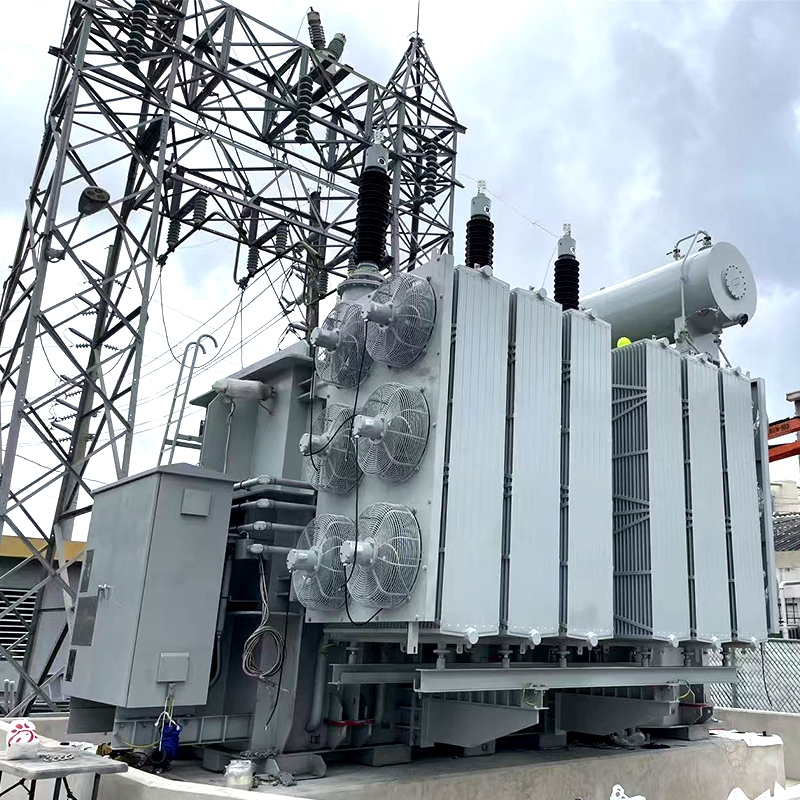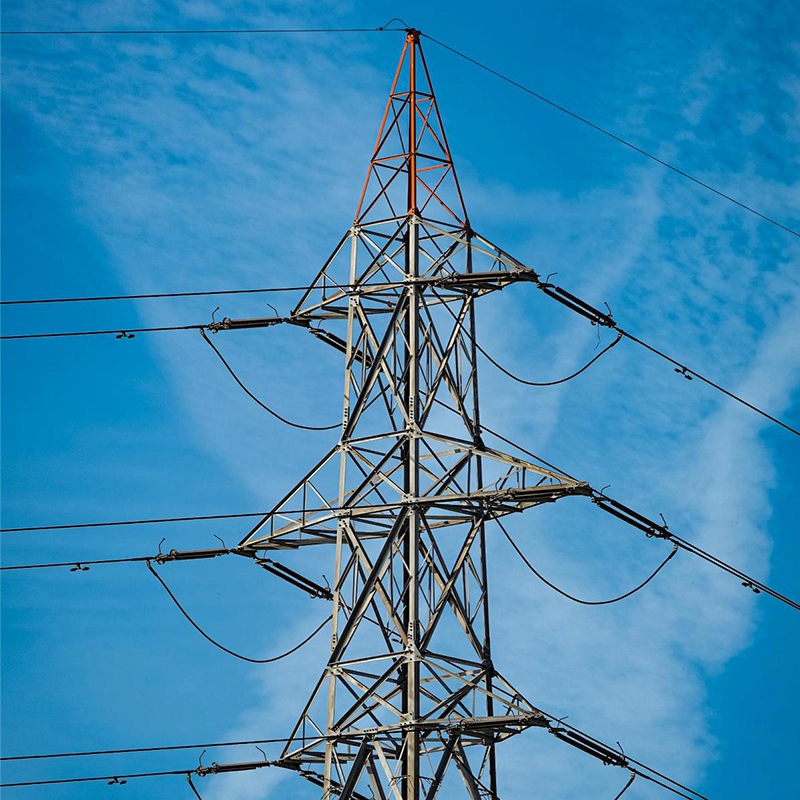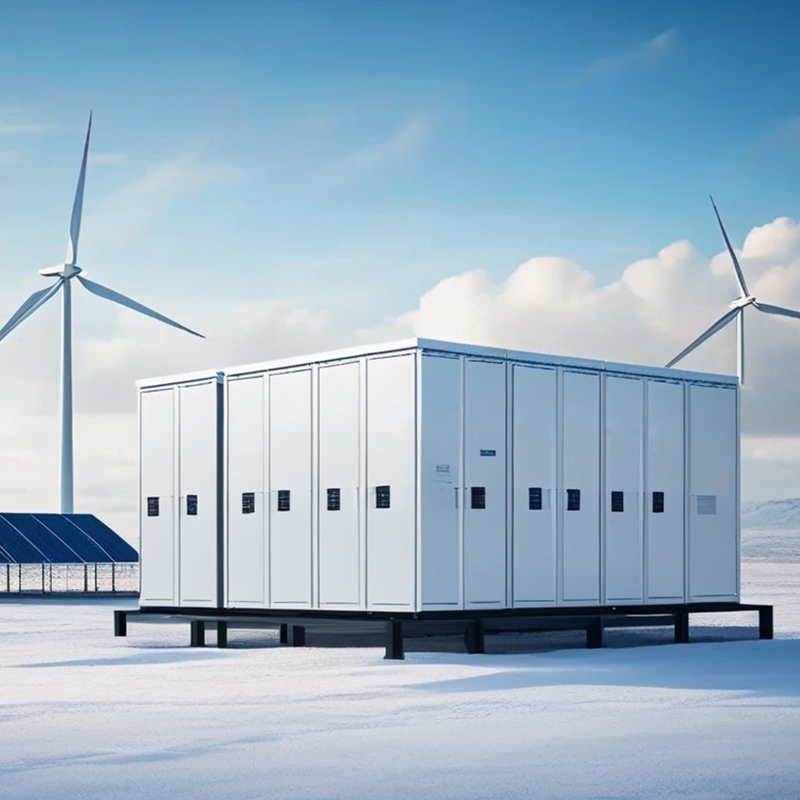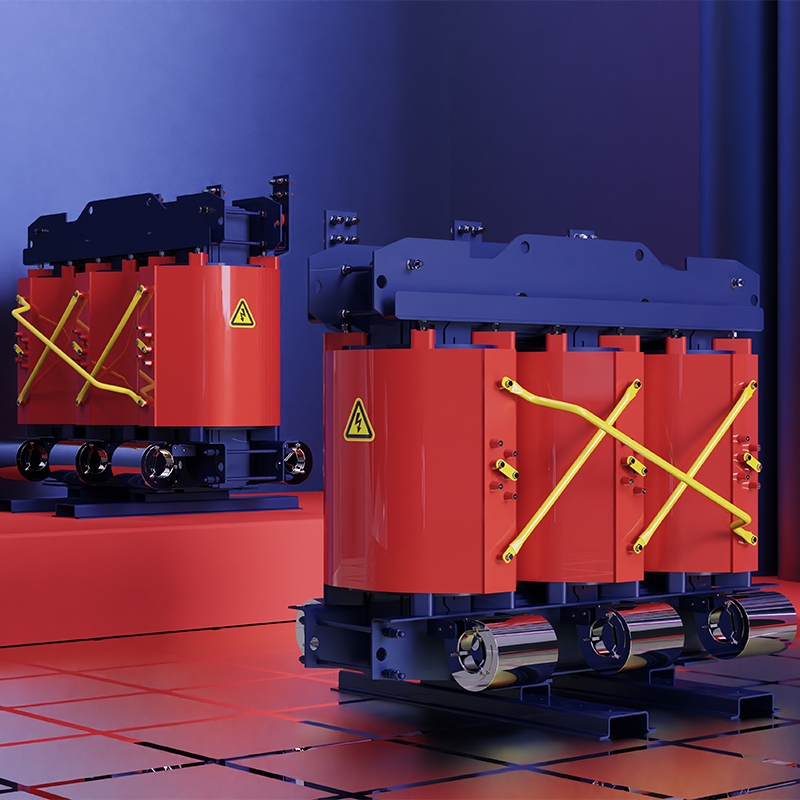Transformers: The central hub of power transmission and conversion - Insight and practical guide
First, the basic principle of the transformer: the exquisite interpretation of electromagnetic induction
The operation of the transformer is based on the law of electromagnetic induction, and the core component is composed of the iron core and the primary and secondary coils wound around it. When an alternating current flows through the primary coil, it generates an alternating magnetic field in the core, which is highly concentrated and coupled to the secondary coil due to the high permeability of the core. According to Faraday's law of electromagnetic induction, the alternating magnetic field induces the electromotive force in the secondary coil, and if the number of turns in the secondary coil is different from that in the primary, the voltage transformation is realized. The formula is as follows: U_1/U_2 = N_1/N_2, where U_1 and U_2 are the primary and secondary voltages respectively, and N_1 and N_2 are the number of turns of the corresponding coil. This simple and subtle principle lays the foundation for the flexible allocation of electricity.
Second, the classification of transformers: multiple architecture, each unique
Power Transformer: As the backbone of power transmission, it is large and common in substations. There is a boost type, such as a water power station will raise the low voltage (usually about 10kV) emitted by the generator to ultra-high voltage (such as 220kV, 500kV or even higher), reduce transmission losses, long-distance "rush" to the city; The step-down type "stands guard" in the urban distribution network, lowering the high voltage step by step to 220V for residential electricity or 380V for industrial electricity to ensure safe and stable power supply, with a capacity of up to thousands of megavolt-ampere, carrying a huge amount of power flow.
Distribution transformer: deep urban and rural power supply ends, directly serving the end user. General capacity in tens of kVA to hundreds of KVA, installed in poles, residential distribution rooms and other places, the medium voltage distribution network voltage (such as 10kV) into daily electricity needs, pay attention to energy saving, low noise and reliability, for thousands of households light up, drive electrical appliances, is the nearest power "porters" from life.
Dry transformer: special insulating medium, the use of epoxy resin and other solid materials, no oil immersed flammable risk, suitable for fire prevention, explosion-proof requirements of strict places, such as shopping malls, hospitals, data centers and other densely populated, valuable equipment, in a limited space to provide reliable power conversion, although the heat dissipation is relatively difficult, but with the safety advantage of a stable market corner.
Oil-immersed transformer: filled with mineral oil or insulating oil heat dissipation, insulation, heat dissipation efficiency, can carry high load operation, widely used in outdoor substations, industrial plants and other open areas, large capacity, long life is its label, but need to support anti-oil leakage, fire protection facilities to ensure environmental safety.
Third, the key parameters of the transformer: accurate measurement of performance
Rated capacity: Represents the maximum capacity of the transformer to transmit electrical energy, in kilovolt-ampere (kVA) or megavolt-ampere (MVA). It determines whether the transformer can meet the load demand, such as a small factory estimated peak power consumption of 500kVA, the rated capacity of the selected distribution transformer needs to be adapted, otherwise it will lead to overload, heat damage, or overuse, cost waste.
Rated voltage: covers primary and secondary ratings, which specifies the voltage level for normal operation of the transformer, accurately matching the power grid and electrical equipment. The primary rated voltage of the power transformer connected to the 110kV line on the power grid side is 110kV, and the secondary voltage is set to 10kV according to the step-down demand, etc. Once the voltage deviation is large, it will not only affect the transmission efficiency, but also affect the electrical equipment and cause failure.
Transformer ratio: determined by the coil turn ratio, directly reflects the voltage transformation amplitude. The transformer transformer in the mobile phone charger is carefully designed to accurately reduce the 220V mains power to 5V or 9V suitable for the mobile phone battery, etc., to ensure safe and efficient charging; The power system boost and buck operation is strictly follow the transformer ratio to ensure the power flow according to the plan.
No-load loss and load loss: no-load loss is the primary power, secondary open circuit energy consumption, from the core hysteresis, eddy current, reflecting the transformer's own energy consumption characteristics, low no-load loss is conducive to energy saving, such as the new energy-saving distribution transformer in this respect has significant advantages; The load loss increases with the increase of the load current, which is caused by the heating of the coil resistance.
Fourth, transformer manufacturing process: ingenuity cast power core
Iron core manufacturing: iron core material selection, silicon steel sheet is the first choice, its high permeability, low hysteresis loss characteristics conducive to magnetic field conduction. Through the stamping and lamination process, the silicon steel sheet is superimposed layer by layer, the staggered joints reduce the magnetic resistance of the magnetic circuit, and then the internal stress is eliminated by annealing treatment, and the magnetic properties are improved. The air gap is strictly controlled during assembly to ensure the uniform and tight coupling of the magnetic field.
Coil winding: According to the number of turns and diameter of the design, the selection of well-insulated electromagnetic wire, the winding machine is accurately wound, the layer and turn are properly insulated, and the high voltage winding is often wound in sections to strengthen the insulation, the process accuracy determines the electrical performance and reliability of the transformer, and minor defects may cause breakdown risk under high voltage.
Insulation treatment: dry transformer epoxy casting, high temperature curing molding, a full range of wrap coil, moisture, insulation, mechanical strength; The oil-immersed transformer strictly cleans and dries the insulating oil to ensure good insulation and heat dissipation, strictly controls bubbles when filling, and prevents partial discharge. The complete insulation system is the shield for the transformer to withstand high voltage tests.
5. Application cases of transformers in different fields: Light up life and empower industry
Power transmission and distribution: The power of large hydropower and thermal power bases is "assisted" by step-up transformers, crossing mountains and rivers with ultra-high voltage, reaching the edge of the city and then entering the household by step-down transformers, ensuring stable power supply from factory roaring equipment to home warm lights, like the city's "power vessels", maintaining the pulse of operation.
Industrial manufacturing: factory automation production line of various types of motors, equipment needs diverse, transformer according to the need to buck, isolation, voltage regulation, to provide pure power for high-precision machine tools, to ensure processing accuracy; In high-energy-consuming industries such as metallurgy and chemical industry, high-power transformers match electric arc furnaces, electrolyzers and other loads to drive the production process and are the "behind the scenes" of industrial power.
In the field of new energy: solar photovoltaic power station, the transformer in the inverter will convert the AC power from direct current to the grid-connected voltage, which will be incorporated into the grid; The output voltage of wind turbines fluctuates greatly, and is stably integrated into the network after dynamic voltage regulation by transformers, helping green energy to integrate into the power "big family" and promote energy transformation.
Six, transformer maintenance and fault diagnosis: protect the power lifeline
Routine maintenance: regularly inspect the appearance to check whether there is oil leakage and shell damage; Monitor running sound, uniform buzzing is normal, abnormal noise indicates loosening, partial discharge; Detect oil temperature and winding temperature to prevent overheating; Test the insulation resistance to ensure good insulation, timely clean up dust and debris, and "health care" for the transformer.
Fault diagnosis: winding short-circuit fault, manifested as current surge, oil temperature surge, differential protection action, mostly due to insulation aging, overvoltage breakdown, need to outage maintenance, replace the damaged winding; Iron core multi-point grounding fault caused local overheating, oil chromatographic abnormalities, check the ground point, repair insulation; Poor tap changer contact will cause voltage fluctuations, heating, accurate adjustment, grinding contact is the way to repair, professional operation and maintenance to ensure transformer longevity.
As the mainstay of the power and electronics world, transformers are interlinked from basic principles to complex applications, fine manufacturing to careful maintenance. In-depth study of transformer knowledge is a compulsory course for electrical engineers and technicians to control electric energy and ensure power supply, and it is also a solid rely for modern society to move towards an era of efficient and intelligent electricity consumption.




